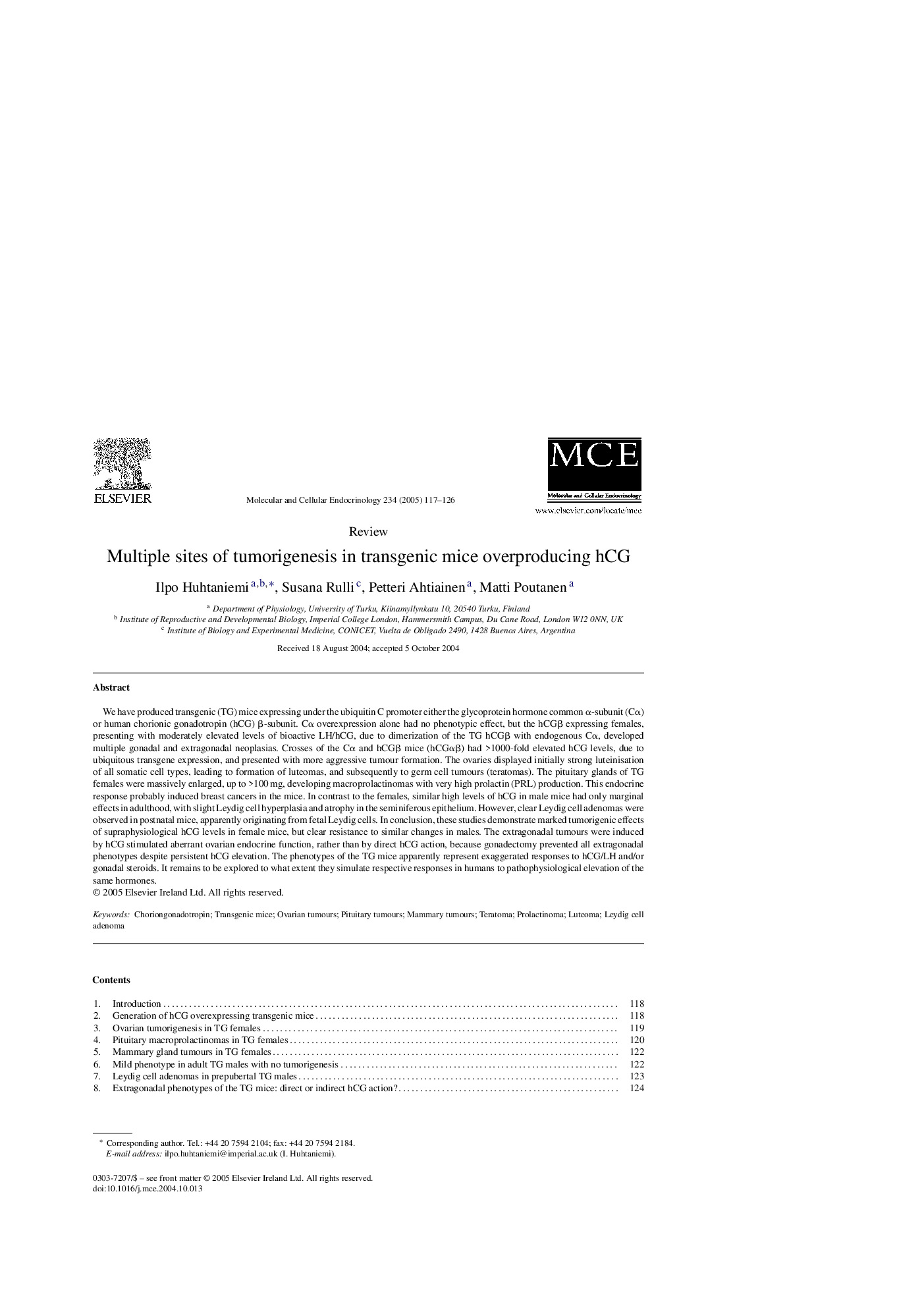| کد مقاله | کد نشریه | سال انتشار | مقاله انگلیسی | نسخه تمام متن |
|---|---|---|---|---|
| 9914996 | 1551023 | 2005 | 10 صفحه PDF | دانلود رایگان |
عنوان انگلیسی مقاله ISI
Multiple sites of tumorigenesis in transgenic mice overproducing hCG
دانلود مقاله + سفارش ترجمه
دانلود مقاله ISI انگلیسی
رایگان برای ایرانیان
کلمات کلیدی
موضوعات مرتبط
علوم زیستی و بیوفناوری
بیوشیمی، ژنتیک و زیست شناسی مولکولی
بیولوژی سلول
پیش نمایش صفحه اول مقاله

چکیده انگلیسی
We have produced transgenic (TG) mice expressing under the ubiquitin C promoter either the glycoprotein hormone common α-subunit (Cα) or human chorionic gonadotropin (hCG) β-subunit. Cα overexpression alone had no phenotypic effect, but the hCGβ expressing females, presenting with moderately elevated levels of bioactive LH/hCG, due to dimerization of the TG hCGβ with endogenous Cα, developed multiple gonadal and extragonadal neoplasias. Crosses of the Cα and hCGβ mice (hCGαβ) had >1000-fold elevated hCG levels, due to ubiquitous transgene expression, and presented with more aggressive tumour formation. The ovaries displayed initially strong luteinisation of all somatic cell types, leading to formation of luteomas, and subsequently to germ cell tumours (teratomas). The pituitary glands of TG females were massively enlarged, up to >100 mg, developing macroprolactinomas with very high prolactin (PRL) production. This endocrine response probably induced breast cancers in the mice. In contrast to the females, similar high levels of hCG in male mice had only marginal effects in adulthood, with slight Leydig cell hyperplasia and atrophy in the seminiferous epithelium. However, clear Leydig cell adenomas were observed in postnatal mice, apparently originating from fetal Leydig cells. In conclusion, these studies demonstrate marked tumorigenic effects of supraphysiological hCG levels in female mice, but clear resistance to similar changes in males. The extragonadal tumours were induced by hCG stimulated aberrant ovarian endocrine function, rather than by direct hCG action, because gonadectomy prevented all extragonadal phenotypes despite persistent hCG elevation. The phenotypes of the TG mice apparently represent exaggerated responses to hCG/LH and/or gonadal steroids. It remains to be explored to what extent they simulate respective responses in humans to pathophysiological elevation of the same hormones.
ناشر
Database: Elsevier - ScienceDirect (ساینس دایرکت)
Journal: Molecular and Cellular Endocrinology - Volume 234, Issues 1â2, 29 April 2005, Pages 117-126
Journal: Molecular and Cellular Endocrinology - Volume 234, Issues 1â2, 29 April 2005, Pages 117-126
نویسندگان
Ilpo Huhtaniemi, Susana Rulli, Petteri Ahtiainen, Matti Poutanen,